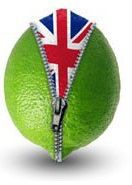If you judge people solely by how they hold utensils, you’re a horrible person who nobody should be forced to endure. Table manners should focus on more relevant things.
I don’t know who said this but I completely disagree.
Many American’s simply don’t know how to use a knife and fork and have table manners that make a drunk chimpanzee look civilized. One does not simply spear meat with a fork held vertically in a clenched fist and cut it into little bits before swapping hands and scooping up mouthfuls with a fork held like a shrimping net. It’s not a crime, it’s worse than a crime. It’s an insult.
The other irritating Americanism we see is the Star-Spangled Fork-Flip, the Freedom Fork-Over, or the Homeland Handoff, or the cut-and-switch……..but wait I digress, we Brits are probably to blame for this.
The cut-and-switch is originally European. According to Darra Goldstein, a professor at Williams College and the founding editor of Gastronomica: The Journal of Food and Culture, when forks first came to the European dining table, diners took their cues from the kitchen, where the fork would be held in the left hand to steady a slab of meat, say, and the right hand wielded the knife. So far, so good. But around the early 18th century, particularly in France, it became fashionable for diners to put the knife down after cutting, and swap the fork to the right hand—i.e., to cut-and-switch. OK so let’s blame the French, I mean they are somewhat barbarian.
Just like ‘How to properly merge onto a freeway’ (guess what the next article is about?) we should be taught correctly how to hold our utensils.
Etiquette Rules
Don’t stab your meat like a wild beast or hold your fork like a shovel.
Don’t apply lipstick at the table.
Don’t salt your food before tasting it.
Don’t lick your food off your knife.
Your bread plate is on your left, don’t steal your neighbors. Solids on the left liquids on the right.
